
AMERICAN Flow Control
Series 2500 Resilient Wedge Gate Valve
Page 3A-40
SERIES 2500 - INSTALLATION & TESTING
Storage Reference Material
Valves are palletized when shipped, which provides
suitable protection from weather and sunlight during storage.
If palletizing is disbanded and valves removed, remaining
valves should be suitably covered or stored elsewhere with
the valve stem vertical.
●Alwaysstorevalvesfullyclosed.
●Whenpossible,keepvalvesoutoftheweather.
●Incoldclimates,keeptheinsideofthevalvedrainedof
any water to prevent freezing.
● Whenever possible, cover valves with a waterproof
covering.
●Protectallpartsofthevalveatalltimes
These reference materials are available and should be
helpful in the installation and testing of gate valve products.
ANSI/AWWA C515 Reduced-Wall, Resilient-Seated
Gate Valves
ANSI/AWWA C500 Metal-Seated Gate Valves - 3”
- 48”
ANSI/AWWA C600 Installation of Ductile-Iron
Water Mains
ANSI/AWWA M23 PVC Pipe - Design and
Installation.
All installation, operation and maintenance instructions
issued by the manufacturer of the pipe and the valves.
Valve user guides as published by MSS.
NFPA-24 Private Fire Service Mains and
Their Appurtenances
These industry practices have been listed to help you
make a safe and acceptable installation of a gate valve.
Inspection Before Installation
Check to make sure that the valve end connections
are clean and that the valve is not damaged.
Check opening direction and other details against
specication.
Open and close the valve to make sure it works
properly.
Clean the inside of the valve to remove all
contaminantsthatmayaectwatersystempurity.
Keep the valve closed when placing in trench.
Installation
Handle the valve carefully.
Check all bolts for tightness. Gaskets may shrink
during storage and might leak if the bolts are not
retightened.
Prepare pipe ends in accordance with pipe manufac-
turer’s instructions.
Install the valve as per appropriate instructions for the
specied joint (anged, mechanical joint, PVC,
etc.)
NOTE: Only use 1/8” thick rubber “ring” type
gaskets Do not use composition or at full-face gas-
kets.
Be sure that the water main is properly supported to
avoid line stress on the valve. Make sure the valve is
properly supported and that no stress is transferred
to the adjoining pipeline. Due to the exponential
increase in the weight of larger size valves, prop-
er installation bedding and support is essential.
Failure to make provisions for the weight of the
valve can result in design and/or installation failure.
In buried applications, make sure that the valve box
does not transmit trac loads or other stress to the
valve.
Do not use valves to force a pipeline into position. Do
notdeectanyvalve/pipejoint.
●
●
●
●
1.
2.
3.
4.
5.
6.
7.
1.
2.
3.
Testing Procedure
Check to see that all valve joints and pressure
containing bolting are tight.
Valves should never be tested beyond the rated
working pressure.
After testing, steps should be taken to relieve any
trapped pressure in the body of the valve.

AMERICAN Flow Control
Series 2500 Resilient Wedge Gate Valve
Page 3A-41
SERIES 2500 - CLASS 125 FLANGED VALVE INSTALLATION, 4”–12” SIZES

AMERICAN Flow Control
Series 2500 Resilient Wedge Gate Valve
Page 3A-42
ALPHA™ Restraint Joint Installation Instructions
ALPHA restraint joints will accommodate the
following pipe types and sizes:
4. Lubricate the gasket and pipe surface with a
suitable gasket lubricant.
5. With the nut unthreaded to the end of the bolt
and the end ring rotated as far counterclockwise
as possible, insert pipe into the ALPHA socket
until it contacts the pipe stop. The mark applied
to the pipe OD in step 3 should be aligned with
the edge of the pipe socket.
ALPHA
• Ductile iron per AWWA C151
• PVC per ASTM D1785 (Schedule 40 and 80)
• PVC per ASTM D2241 (SDR 21)
• PVC per AWWA C900
• HDPE per AWWA C906 (SDR 9, 11, 13.5, and
17)
ALPHA XL
• Gray iron (Class A, B, C, and D)
Readinstallationinstructionsrstbeforeinstalling.Checkpartstoensurethatnodamagehas
occurred during transit and that no parts are missing.
IL4332-1
Nominal
Size (in)
ALPHA OD
Range (in)
ALPHA XL OD
Range (in)
4 4.50 - 4.90 4.80 - 5.10
6 6.60 - 7.00 6.90 - 7.10
8 8.60 - 9.10 9.05 - 9.40
10 10.75 - 11.20 11.10 - 11.45
12 12.75 - 13.30 13.20 - 13.60
Nominal
Size (in)
Distance From the End of Pipe (inches)
ALPHA ALPHA XL
4 3.50 4.25
6 3.75 4.00
8 5.00 5.50
10 5.13 5.63
12 5.38 6.00
ALPHA™isalicensedtrademarkofRomacIndustries,Inc.(U.S.Patent8,894,100)
1. Compare diameter of pipe with those listed
above to ensure that the correct size joint has
been selected.
2. Remove any scale or debris that could interfere
with the grippers’ engagement with the pipe.
Clean the pipe surface wherever the gasket will
come in contact with the pipe, and check to see
that the pipe surface is smooth (no depressions,
projections, gouges, etc.) where the gaskets seal
against the pipe. Also verify that the pipe is
round within the OD limits described in step 1
and that the pipe cut is square.
3. Mark the OD of the pipe as a means of verifying
full insertion in the joint. The pipe should be
marked at the following locations as measured
from the end of the pipe.

AMERICAN Flow Control
Series 2500 Resilient Wedge Gate Valve
Page 3A-43
9.Conrmproperinstallationbypressurizingthe
line and checking for leaks.
10.Backllandcompactcarefullyaroundthepipe
and joint.
PRECAUTIONS
1. Make sure no foreign material is trapped
between the gasket and pipe, between the
grippers, or in the end ring mechanism.
2. Carefully inspect gasket for damage and ensure
thatthecutendofthepipehasbeensuciently
deburred to prevent damage to the gasket
during installation.
3. Keep bolt threads free of debris to allow proper
tightening.
4. To ensure proper nut tightening, use of a torque
wrench with a 1-1/16-inch deep-well socket is
recommended. Do not overtorque. Do not use
an impact wrench.
5. Do not strike or pry on the joint with hammers,
shovels, or other equipment.
6. Operating pressure shall not exceed whichever
is lower; the rated working pressure of the pipe,
or that of the adjoining valve or hydrant.
7. When used with HDPE pipe, application shall
be limited to service with water temperature
between 32° F and 85° F.
8. For cold weather conditions (below 40° F),
performance can be improved by warming
the joint and gasket.
9. Per ANSI/AWWA C605, which governs the
installation of PVC pipe, the factory bevel on
PVC pipe may need to be removed or
shortened
to ensure gasket contact when used with
ttings,valves,hydrantandother
appurtenances.
10. The use of ALPHA restraint joints on valves
andrehydrantsshallbelimitedtoburied
(non-exposed) applications.
11. ALPHA is not intended for use on the plain end
ofatting,orothersimilarlyhardmaterial.
Note: Do not overtorque or retighten. If a
good seal is not achieved after tightening
nut to the torque value shown in the table
above, check condition of pipe (Step 2), verify
maximum pipe deection is not exceeded
(Step 6), and ensure pipe is fully inserted into
the socket and contacting the pipe stop.
6.Setthedesiredpipedeectionangle(4°
maximum). ALPHA XL installations on pipe at
the top of the OD range may have limited
deection(2°maximum).
IL4332-2
Note:Donotdeectpipejointafterinstallation.
Nominal Size
(in)
Torque
(ft-lbs)
4 30
6 30
8 45
10 45
12 45
7. Tighten nut until the gasket contacts the pipe
and the pipe is snugly held in place. This should
happen after applying approximately 10-15
ft-lbs of torque.
8. Tighten the nut to the torque value shown in
thetablebelowandconrmthatthegrippers
are contacting the pipe.
-
 1
1
-
 2
2
-
 3
3
-
 4
4
American Flow Control 2516ALDFTM Installation guide
- Type
- Installation guide
- This manual is also suitable for
Ask a question and I''ll find the answer in the document
Finding information in a document is now easier with AI
Related papers
-
American Flow Control B84B User guide
-
American Flow Control 2606ARGFFF User guide
-
American Flow Control MK73OLP6MJ5S2 Installation guide
-
American Flow Control B84B Installation guide
-
American Flow Control MARK-73 Installation guide
-
American Flow Control AFCB84BLAOLTY Installation guide
-
American Flow Control C504A010703PRPR Installation guide
-
American Flow Control 2530DLDFTM Installation guide
-
American Flow Control 2536ALSFMM Installation guide
-
American Flow Control 2608ARAFMM Installation guide
Other documents
-
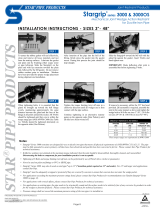 Star Pipe Products SGDPPK10N Installation guide
Star Pipe Products SGDPPK10N Installation guide
-
Mueller Company A2361-06-10 Installation guide
-
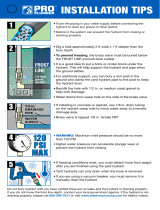 Water Source PPYH-4 User guide
Water Source PPYH-4 User guide
-
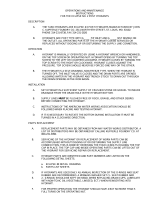 Kupferle, John C Foundry X566-NS Installation guide
Kupferle, John C Foundry X566-NS Installation guide
-
Merrill CNL7503 Installation guide
-
Everbilt EBYH06NL User guide
-
Duracell MN21 User manual
-
Mueller Company 015428 333 Installation guide
-
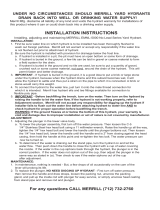 Merrill EMNL7502 Operating instructions
Merrill EMNL7502 Operating instructions
-
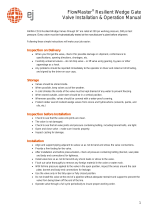 EJ USA 22042 Installation guide
EJ USA 22042 Installation guide








